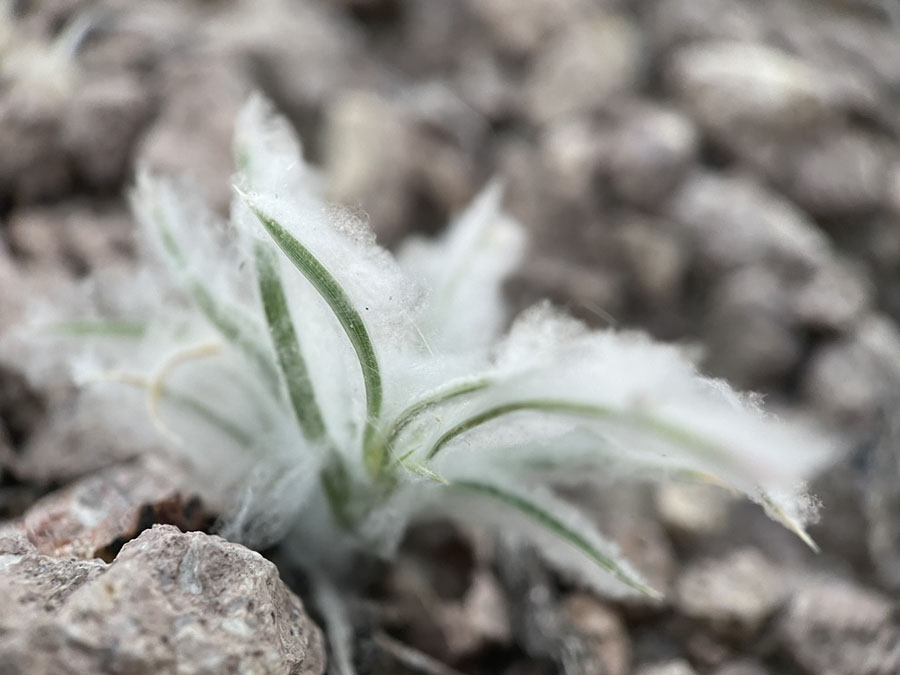
Important: I have not yet been fortunate enough to meet any of these critters, so all five images are not mine and copyright to their respective authors.
It takes real passion and obsession to be an enthusiastic Opie and an indefatigable grass scholar. Unlike many other angiosperms, grasses have minute flowering parts, and thus might pale in appearance before the more ostentatious plants. Many grasses also have amazingly wide distributions, and so the probability of encountering unique and endemic species when traveling is lower than for plant families with less robust members.
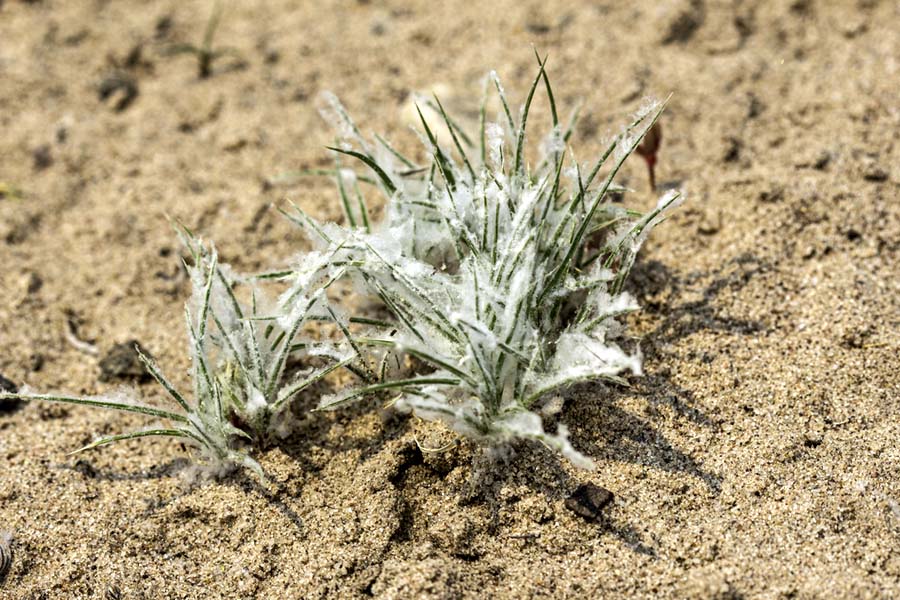
Such thoughts probably passed through my mind when I read about the discovery of the composite plant Ovicula biradiata (woolly devil), which was discovered in Big Bend National Park. The hairiness of the new species intrigued me, and I decided that if the Compositae/Asteraceae could do it, then the Poaceae could probably do it too.
I searched for ‘hairy’ grasses, and was astonished to find that there were indeed grass species that had the same woolly appearance. In this case, the species I found was Munroa squarrosa, and the darn critter looked mucho cute in its bushy attire!
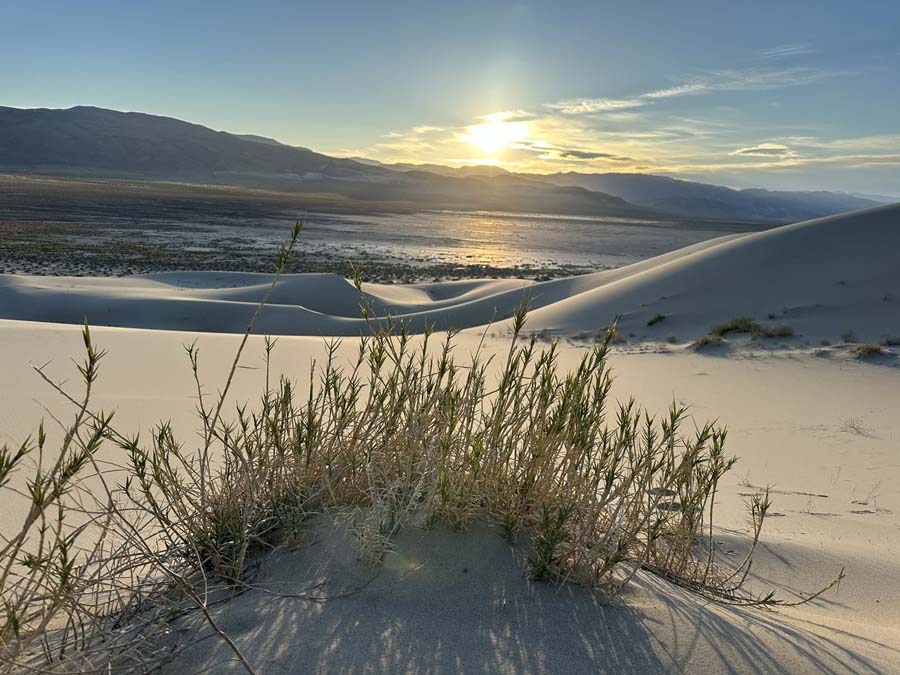
It is a species of semi-arid and arid locales, and it belonged to a taxon of grasses that immediately piqued my interest, the subtribe Scleropogoninae (of the subfamily Chloridoideae). This is because this taxon included one of my favorite species ever, the endemic and really unique Swallenia alexandrae, which only exists as small populations in the beautiful but forbidding Eureka Dunes of Death Valley in California.

The Scleropogoninae (or the Scleros, as i have started to call them, if only to make it easier to remember and say) is composed of only six genera, three of which are monotypic (that is, having only one species in the genus). The members of this really small group of grasses are inhabitants of semi-arid and arid open environments, and are concentrated in the western part of the USA, with representatives in South America as well. They are C4 grasses, a trait which they got from their shared ancestor. Their nearest relatives are the Muhlenbergia clan, as well as the Boutelouinae group, both of which tend to be amenable towards hot and dry climates as well (Weichen et al, 2022).
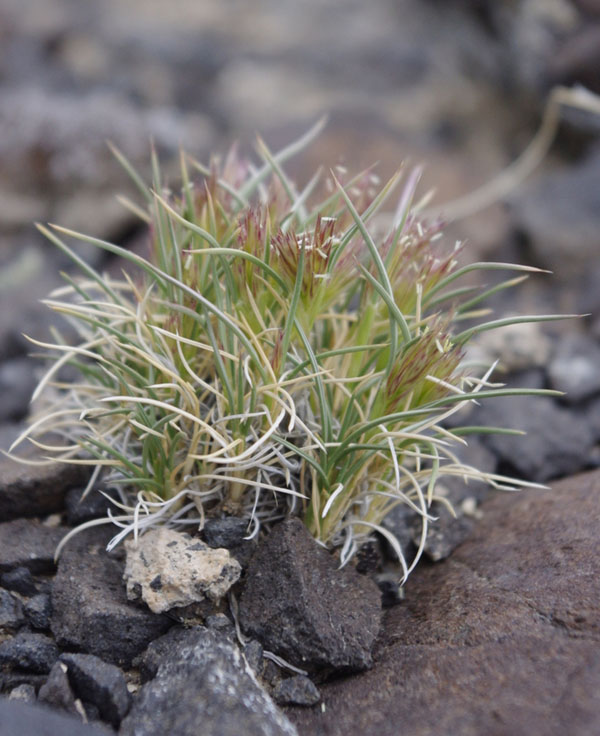
The three monotypic genera are Dasyochloa (Dasyochloa pulchella), Scleropogon (Scleropogon brevifolius), and Swallenia (Swallenia alexandrae), although it should be noted that there is a study that proposes inclusion of the lone Dasyochloa pulchella into the genus Munroa (Amarilla at al, 2013) . Interestingly enough, S. alexandrae is sister to the rest of the Scleros. This fascinating grass can only be found in the Eureka Dunes in California and is a federally listed endangered species. Although its location is hours away from any settlement, the dunes had been used by off-road recreational vehicles in the past, and so it has been the subject of various conservation measures.
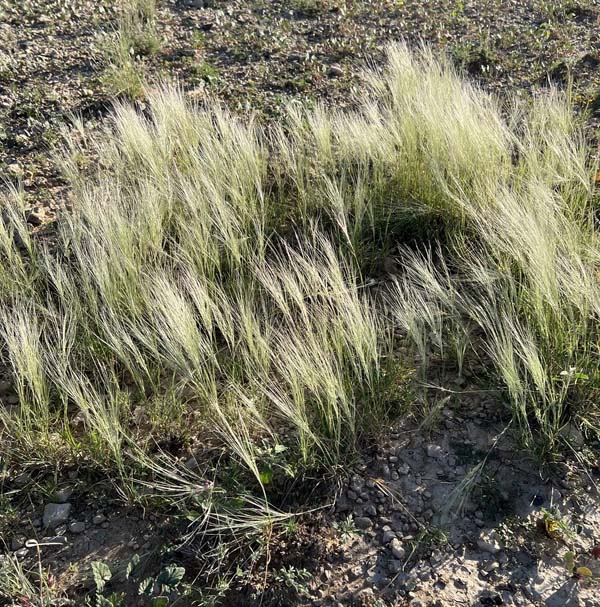
The genus Munroa itself is also interesting because the populations are notably disjunct. Two species occur in deserts in North America (from southern Canada to northern Mexico), while the other four species occur in deserts in South America (from Peru down to Argentina). Thus, some researchers decided to use this genus to study the three hypothesis for taxon distribution patterns that are disjunct: (1) vicariance, where widely distributed species are separated and soon diverged; (2) the stepping stone hypothesis, where diaspores move short distance through intermediate “liveable” areas; and (3) the long distance dispersal hypothesis, where diaspores are dispersed long distances to found new population far away from the original population.
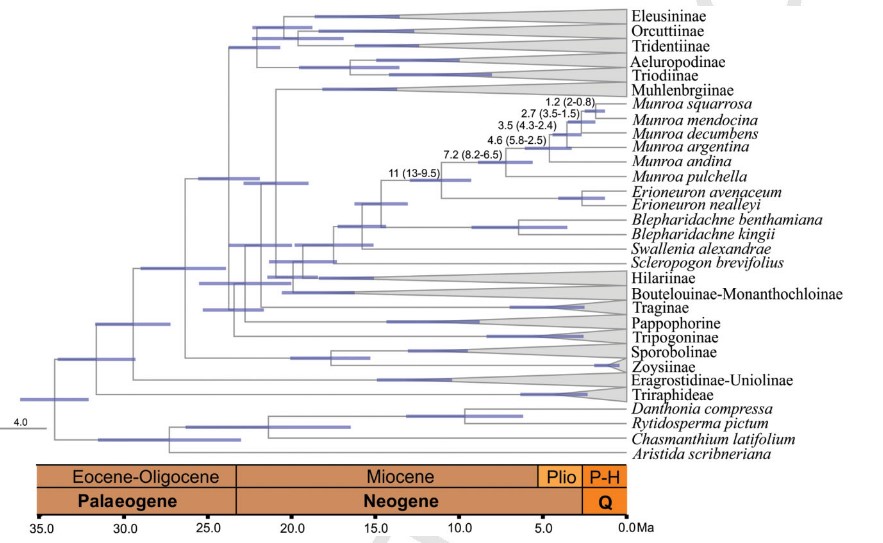
They found that the initial diversification of Munroa seemed to happen 7.2 mya in North America, with long distance dispersal happening to South America. The South American clades then expanded and diversified circa 4.6 mya, after which there was another long distance dispersal event, this time from South America to North America (Amarilla et al, 2015).
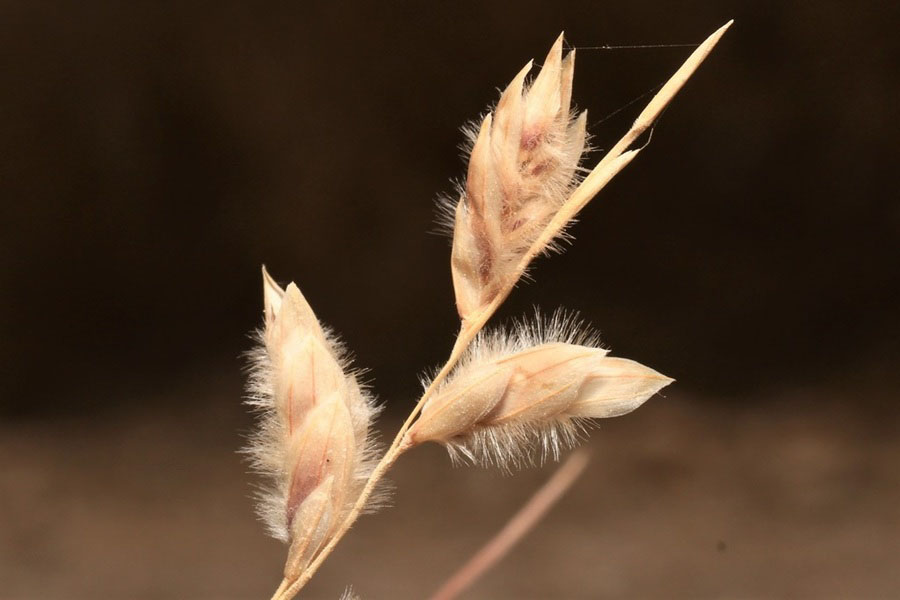
Unfortunately, there does not seem to be much attention beyond that on the Scleros, and the paucity of information on their ecology and biology remains to this day. They may not have much economic use, but perhaps more researchers in the future will turn their eyes on this intriguing group of grasses. Personally, now that I’ve “discovered” their existence, I definitely will keep an eye out for members of this clade whenever I am in their area.
Literature Cited
Amarilla, LD; Chiapella, Jorge Oscar; Nagahama, Nicolas; Anton, Ana Maria Ramona; (2013). Inclusion of dasyochloa in the amphitropical genus Munroa (Poaceae, Chloridoideae) based on morphological evidence; Instituto de Botánica Darwinion; Darwiniana, Nueva serie; 1; 2; 11-2013; 241-252
Amarilla LD, Jorge O. Chiapella, Victoria Sosa, Natalia C. Moreno, Ana M. Anton (2015). A tale of North and South America: time and mode of dispersal of the amphitropical genus Munroa (Poaceae, Chloridoideae), Botanical Journal of the Linnean Society, Volume 179, Issue 1, September 2015, Pages 110–125, https://doi.org/10.1111/boj.12304
Weichen Huang, Lin Zhang, J. Travis Columbus, Yi Hu, Yiyong Zhao, Lin Tang, Zhenhua Guo, Wenli Chen, Michael McKain, Madelaine Bartlett, Chien-Hsun Huang, De-Zhu Li, Song Ge, Hong Ma. A well-supported nuclear phylogeny of Poaceae and implications for the evolution of C4 photosynthesis. Molecular Plant, 2022; DOI: 10.1016/j.molp.2022.01.015

Leave a Reply